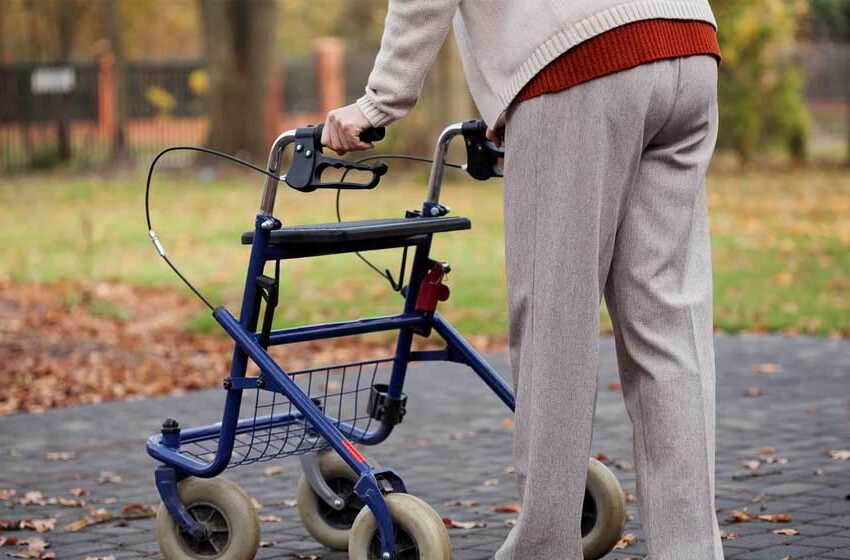The Right Way to Pick Mobility Walkers for Seniors

Roughly one in four Americans age 65 or older falls annually, making mobility walkers for seniors an essential safety tool for maintaining independence. According to the Centers for Disease Control and Prevention, 37% of these falls result in injuries requiring medical treatment or restricted activity.
Choosing the right walker isn’t just about preventing falls, however. The best walkers for seniors with balance problems can actually help maintain walking abilities and increase independence. While different types of walkers exist – from standard models to rollators – finding the perfect match depends on individual needs. Types of walkers for elderly users vary significantly in size, weight capacity, and features. What to look for in a walker includes manageable weight, helpful accessories, ease of assembly, and durability.
We’ve created this comprehensive guide to help you make an informed decision. After all, an ill-fitted walker can lead to discomfort, reduced mobility, and even accidents. Whether you need support for indoor activities or outdoor adventures, this article will walk you through everything you need to know about selecting the perfect mobility aid.
Understanding the Different Types of Walkers
When selecting mobility aids, it’s essential to understand that walkers come in various designs, each serving different needs. The right mobility walker for seniors depends on individual balance requirements, upper body strength, and intended use environment.
Standard walker
The standard walker offers maximum stability with its four-legged design featuring rubber-tipped feet. Unlike wheeled versions, users must lift this walker with each step, making it ideal for seniors who need significant balance support and can bear substantial weight on the device. Although excellent for stability, standard walkers can be challenging for those with limited upper body strength. Many seniors eventually switch from this type because they tire of lifting it repeatedly. Nevertheless, its lightweight frame makes it easy to fold and transport.
Two-wheel walker
Adding wheels to the front legs creates the two-wheel walker, which offers a more natural walking pattern. This design allows users to push rather than lift the walker, requiring less effort while maintaining good stability. The two-wheel walker works best for seniors who need balance assistance but don’t require bearing substantial weight on the device. Despite its advantages, the fixed front wheels create a large turning arc, potentially causing users to lift the walker when turning—a fall risk. For proper use, seniors should make multiple small turns until facing the desired direction.
Three-wheel rollator
The three-wheel rollator features a triangular design with two wheels in back and one in front, offering excellent maneuverability in tight spaces. This design makes it particularly suitable for navigating narrow hallways and crowded areas. Additionally, three-wheel rollators are typically lighter and more portable than four-wheel versions. Furthermore, they provide more support than walking sticks while maintaining a lightweight, easily maneuverable frame. Though offering excellent mobility, they may not provide the same stability level as four-wheeled options.
Four-wheel rollator
Also known simply as rollators, four-wheel walkers feature wheels on all legs, hand brakes, a seat, and often storage options. These models provide excellent mobility with less restrictive effects on natural gait patterns. Four-wheel rollators are designed primarily for balance enhancement rather than weight-bearing. The seat proves helpful for people who fatigue easily or have conditions requiring frequent rests, such as heart failure or COPD. Despite these benefits, rollators require good coordination and cognition to use safely.
Knee walker
The knee walker (or knee scooter) serves a different purpose than traditional walkers. It’s designed for individuals recovering from lower leg injuries who cannot bear weight on one leg. Featuring a cushioned platform for the injured leg, handlebar for steering, and wheels for movement, knee walkers allow users to maintain an upright posture while “scooting” with their uninjured leg. Though offering excellent mobility during recovery, knee walkers aren’t suitable for those with upper body limitations or poor balance.
How to Choose the Right Walker for Your Needs
Selecting the right mobility aid requires careful assessment of your specific needs. The perfect mobility walkers for seniors will match your physical condition and lifestyle while maximizing safety and independence.
Assessing balance and mobility issues
Balance capabilities directly determine what type of walker suits you best. The Berg Balance Scale, a clinical test scoring balance from 0-56, can help identify fall risk levels. Scores below 40 indicate almost 100% fall risk, suggesting a need for maximum stability. If balance is your primary concern, a standard walker offers superior stability. Conversely, if you have adequate balance but struggle with endurance, a wheeled option might be more appropriate. Moreover, individuals recovering from lower limb injuries typically require sturdier support than those dealing with mild coordination issues.
Considering indoor vs. outdoor use
Your living environment plays a crucial role in walker selection. Two-wheeled walkers are generally better for outdoor use and uneven terrain, while three-wheeled rollators work well in tight indoor spaces due to their smaller footprint. For primarily outdoor use, choose models with wheels 8″ in diameter or larger, as they handle rough surfaces better. Alternatively, indoor-focused walkers should be compact enough to navigate doorways and hallways comfortably.
Weight capacity and body size
Most standard walkers support up to 300 pounds. For users requiring additional capacity, bariatric models accommodate weights exceeding 500 pounds. Besides weight capacity, consider the walker’s frame construction—aluminum frames offer lightweight portability, whereas steel frames provide greater durability and support for heavier individuals. Additionally, proper height adjustment is essential to prevent strain and ensure correct posture.
When to choose a rollator over a walker
Rollators excel for users who need balance assistance but don’t require leaning heavily on their device. If you tire easily yet want to stay active, a rollator’s seat and storage features prove beneficial. Essentially, walkers are ideal for those with poor balance or who need substantial weight-bearing support, whereas rollators better serve individuals with reasonable balance who need primarily stability assistance during longer outings.
Fitting and Adjusting Your Walker Properly
Proper fitting of mobility walkers for seniors is as crucial as selecting the right type. An incorrectly adjusted walker can lead to discomfort, improper posture, and even increase fall risk—ultimately defeating its purpose as a safety aid.
How to check handle height
The correct walker height ensures comfort and proper support. To measure the ideal height:
- Stand straight wearing your regular walking shoes
- Let your arms hang naturally at your sides
- Have someone measure from your wrist crease to the floor
- Adjust walker handles to match this measurement
When properly fitted, your elbows should bend at approximately 15 degrees while gripping the handles. If your arms are straighter, the walker is too low; if bent more, it’s too high. Most walkers allow for height adjustments within a 5-10 inch range. Furthermore, when checking fit, the top of the walker grip should align with the crease on the inside of your wrist when standing inside the walker with relaxed arms.
Choosing the right grip for comfort
Standard walkers typically come with plastic grips, which can be slippery and uncomfortable for extended use. Fortunately, several alternative options exist:
Foam grips provide soft cushioning and work well for those with larger hands. Gel grips offer excellent ergonomic support without being overly soft, allowing for a secure grip. Padded grips provide extra cushion and grip without excessive softness, making them suitable for most hand types.
Seniors with arthritis or nerve damage in their hands may benefit from larger grips, as these are easier to hold with weakened grasp. Conversely, smaller grips work better for those needing maximum stability. Some grips combine materials, such as foam or gel with rubber undersides to prevent slippage.
Adjusting for posture and elbow angle
Proper posture while using a walker significantly impacts safety and comfort. When gripping your walker, maintain an upright position with shoulders relaxed. The handles should facilitate a natural arm position—typically with elbows bent at about 15 degrees.
Incorrect height adjustment often forces users into harmful positions. A walker that’s too high requires more strength to maintain balance and can cause neck strain. Meanwhile, a too-low walker might cause you to hunch forward, creating back pain and limiting the walker’s supportive capability.
Listen to your body—if using your walker causes discomfort, reassess the fit even if measurements seem correct, since individual needs may vary.
Safety Tips and Useful Accessories
Safe usage of mobility walkers for seniors matters just as much as selecting the right type. Following proper techniques prevents falls and ensures maximum benefit from these valuable mobility aids.
How to walk safely with a walker
Proper technique starts with posture—stand upright with your head facing forward, not looking down at your feet. This “regal” posture prevents the forward-leaning position that often leads to falls.
For standard walkers:
- Check your path for obstacles like loose rugs or cords
- Position the walker arm’s length in front of you
- Step into the walker with your weaker leg first
- Follow with your stronger leg
- Repeat the sequence—walker first, then weaker leg, then stronger leg
For wheeled walkers, maintain the same posture plus keep your feet within the frame—not pushing the walker too far ahead while your feet drag behind.
Common mistakes to avoid
The most dangerous errors include failing to lock brakes before sitting or standing. This common oversight causes the walker to roll away, potentially resulting in serious falls.
Other critical mistakes include:
- Leaning forward excessively, creating a “hunchback” position
- Walking with the walker too far in front of your body
- Sitting on a rolling walker while someone pushes you
- Using a walker on stairs without proper training
- Carrying items in your hands instead of using accessories
Helpful accessories: trays, pouches, seats, brakes
Accessories transform basic walkers into customized mobility solutions. Storage options like pouches, bags, or baskets allow carrying personal items without compromising safety. These attachments enable hands-free transportation, maintaining proper walker grip.
For convenience, consider:
- Cup holders for beverages ($10-30)
- Trays for carrying meals ($25-55)
- Storage bags with multiple compartments ($24-45)
- Replacement seats for added comfort ($29-63)
Functional accessories include brake cable replacements ($24.95), wheel replacements for smoother operation ($24-40), and walker ski glides ($24.65) that help walkers move more easily across different surfaces.
Conclusion
Selecting the right mobility walker represents a crucial decision for seniors seeking to maintain independence while ensuring safety. Throughout this guide, we’ve explored the various types of walkers available, from standard models offering maximum stability to versatile rollators with seats and storage options. Most importantly, the perfect walker matches your specific balance needs, physical capabilities, and lifestyle requirements.
Proper fitting and adjustment stand equally important as the walker type itself. A correctly fitted walker allows for natural movement with appropriate posture, ultimately preventing additional strain or injury. The 15-degree elbow bend rule serves as an excellent guideline when checking if your walker height works for your body.
Safety considerations should always remain paramount when using any mobility device. The proper walking technique—maintaining upright posture and following the correct sequence of movements—significantly reduces fall risk. Additionally, useful accessories like storage pouches, cup holders, and trays enhance convenience without compromising safety.
Remember that mobility needs may change over time, so reassessing your walker requirements periodically makes good sense. The right mobility aid does more than prevent falls—it empowers seniors to remain active, engaged, and independent. After all, the best walker is one that fits seamlessly into your life, providing support exactly when and where you need it without limiting your ability to enjoy daily activities.





